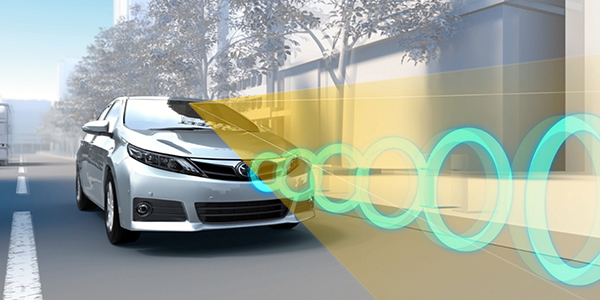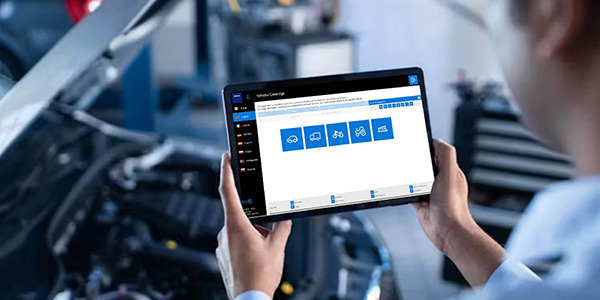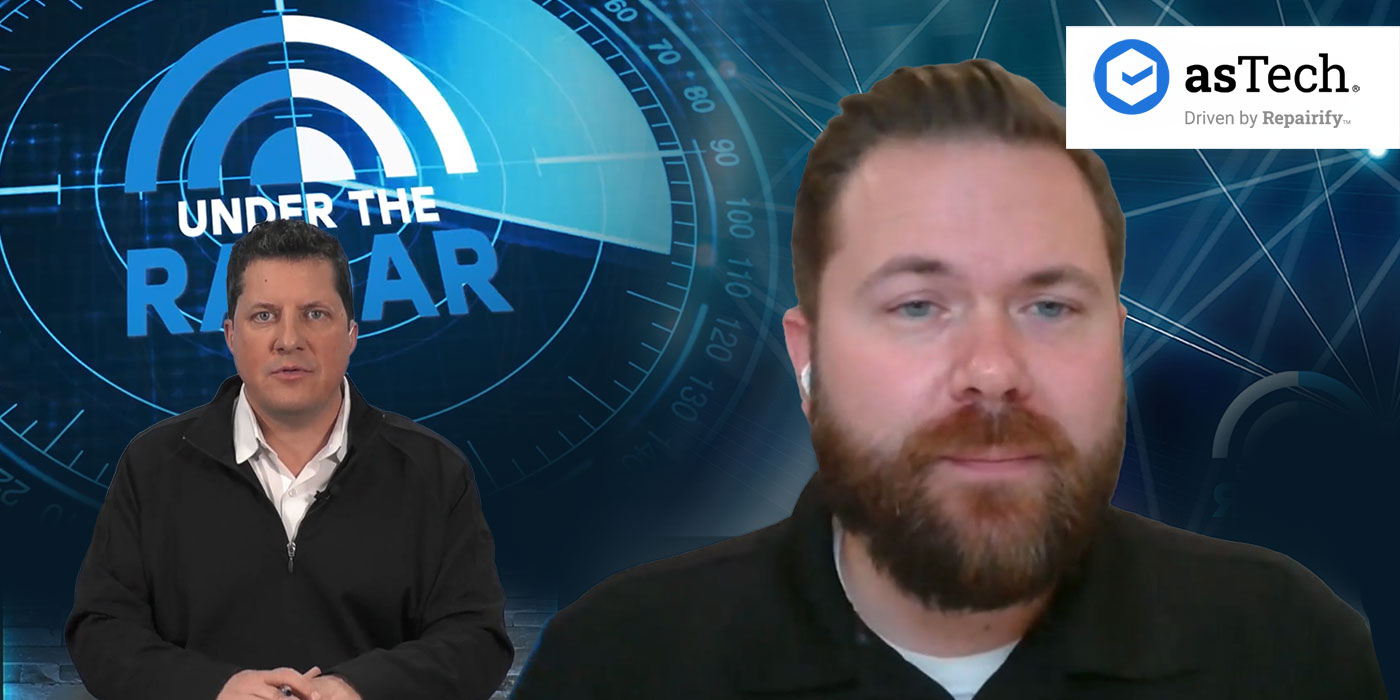
In my travels, I hear many shocking statements from collision repairers across the country that prove we have a long way to go when it comes to education on scanning and recalibration.
As I travel to industry events and shops for training, the topic of conversation always seems to turn to changes in the industry, particularly electronics and advanced driver-assistance system (ADAS) requirements. I appreciate people who have spent time and effort to research and keep up on the industry because I know from personal experience that it can be quite exhausting.
In these conversations I hear in my travels, I inevitably end up hearing a statement from someone that shocks me. The most recent one came out of a conversation on scanning vehicles. A shop manager was asked what he was currently doing regarding scanning.
“We don’t run into that many cars that require scanning or recalibration,” he responded.
So then he was asked if he worked on mainly older vehicles. He replied that he mainly works on newer vehicles in his area. At that point, nobody wanted to say anything. You could see what they were thinking on all of their faces: “OMG, did he just say that?”
I hear what that guy said so frequently that it no longer surprises me. We’ve all heard people refer to the DTC light, too. If the light is not on, we’re good to go. Now think about those scenarios. They bring to light two facts about the auto repair industry: 1) not everyone understands what is changing and what is to be done, and 2) not everyone knows the importance of these systems and the liability we all face.
Lack of Education
Education on what to do, how to do it and even what the definition of ADAS is still lacking in the entire industry. Many estimators/adjusters still do not know what and where all these components are and how they function. Many shops do not know or do not research what needs to be done to complete repairs. I am not totally blaming the shop as information is hard to find and confusing. There is still a battle going on in the industry about the words “recommended” and “required” as it relates to repair procedures. If a liability claim is filed against your shop, what is “required” will be decided in court with a lawyer and 12 people who could not get out of jury duty. The difference between the two words may be decided differently.
Let’s add to the problem that information from the most trusted source, the automaker, is even more confusing. Their instructions can be vague, in some cases, or even nonexistent. Plus, they keep changing procedures. Still, the vehicle manufacturer is the only true source of proper information to repair a vehicle. They engineered and designed the vehicle to perform to specific parameters and safety.
Because of the litigious society we live in, nobody wants to expose themselves to liability, including and especially the manufacturer. They release procedures based on what they have tested and will stand behind them in a court of law. They release and update procedures on their websites every day. But what was correct on Monday may change on Wednesday, which requires shops to spend an immense amount of time looking up procedures on vehicles every time they write an estimate. Accessing repair information on OE websites costs money. Then, there is the time to research, print and interpret what is being said. Other sources of information outside of OE websites also struggle to keep up with changes and updates. TSBs and position statements keep changing the processes every day. How do you keep up?
Please understand that information and procedures are changing so fast that all information providers are struggling to keep repair shops up to date. Therefore, a shop must check for changes frequently.
Information
A shortcut to doing this research is calling the dealership that sells the vehicle. But not even this method is foolproof. I cannot tell you how many times a vehicle has been sent to a dealer and they have the wrong information. I know many dealers that do not even have the right equipment to do the procedure required. This demonstrates that not only is the repair industry confused on the issues, but that the changes are happening so fast that getting training and information to the mechanical repair industry even at dealerships is extremely difficult.
Keep in mind that even though the dealership represents the OEM, they’re all independently owned and operated. Even though they have expectations placed on them by the manufacturer, they make their own business decisions. This leads to inconsistency in equipment needed, training and pricing. Yes, this shouldn’t be, but in my experience it is. This inconsistency is even more obvious when you examine dealerships in different states, cities and even in the same metro area.
Some dealerships are just as ill-equipped as body shops to perform scanning and recalibrations. One example is an ADAS recalibration. A bumper cover is replaced and a blind spot recalibration is required. A shop sends it to the dealer. A common response is, “Well, if there is no DTC light, it is fine.” Another response is, “If you did not unplug the sensor or radar, there is no need to recalibrate.” The best one is, “It’s not needed,” even after you show them the documented procedures that state the procedure is required. Who do you trust, the shop with procedures and documentation from the OE or the dealer representative? I’ve had them tell me “It’s not needed” many times, despite the fact that there was a sticker on the part they sold to me saying the procedure was required.
Price
Now, I will approach the taboo subject of price. To verify the price on a procedure, a call is made to a dealership. Does the person on the line even know what procedure you’re inquiring about? I’ve done this myself to verify for approvals and have had dealerships tell me it’s not necessary to perform a recalibration on the part I’m asking about.
When I’m verifying a price on a required procedure, if I call three different dealerships about the same procedure, I get three radically different prices. Much of this comes down to what procedure is being asked for. A scan or a recalibration? They are totally different procedures. Then, if modules are replaced, reprogramming may be required before a recalibration is done. When a shop or anyone else calls to get an estimate over the phone, how many times has that number been correct after the procedure is done? As a body shop, until you see the vehicle, you can’t write an estimate. The same goes for a mechanical shop, whether it’s a dealer or independent. A quote over the phone is a ballpark at best. Nobody knows the cost until you see and hook up the vehicle. In my personal experience, an estimate over the phone is rarely accurate.
Let’s make matters more difficult by assuming a part is damaged or a problem with a part is causing a recalibration failure. The procedure can’t be done successfully. This may be no fault of the shop doing the repairs – a fairly common scenario in the replacement of auto glass. A forward camera (FCW) recalibration may not be successful due to a difference in the bracket mounting the camera to the windshield – a frequent occurrence on aftermarket glass. Now, another glass is installed and again a recalibration must be done, so now we have the cost of two recalibrations. A side note on this is that some dealers will refuse to do FCW recalibrations unless dealer glass is used.
Equipment
I will always recommend using OE-approved tools using OE-approved software and interface to the vehicle, along with following all OE procedures, targets and environment. If you make a business decision to purchase non-OE tools, make sure the tool manufacturer validates that their software and process including targets meet and perform to all control modules for the year, make and model you’re working on. When using the factory scan equipment, it’s important that the most current software is being used. In many cases, if the program isn’t live with the OEM and is too far out of date, it will not allow you to use the tool. The problem with many aftermarket tools is that repairers typically won’t update them for many months or even years.
Understanding Procedures
Scanning is not just hooking up a tool and doing a printout. If you’re using a tool that is not updated to the vehicle you’re hooked up to, your scan may miss critical modules. The tool will not be able to tell you anything on the modules it can’t access. If a transmission error to the ECU is evident, a recalibration of any system may not be possible. Being able to determine what is collision-related damage and non-collision related damage becomes a priority to a shop.
We’ve all heard the “It was working before I brought it to your shop” statement from customers and ended up spending money on something we shouldn’t have. OE manufacturers are specific about which software and interface to use with the vehicle. If your tool is not approved by the OE, your shop may not be in accordance with procedures set forth for repairs completed in OE-certified shops.
Pre-repair scans are also about determining if repairs will change sensors and bracket mounting locations. Are wires or connectors damaged? A pre-repair scan is an electronics blueprint for a shop. An experienced person who knows where components are and what needs to be done after repairs are completed is crucial to building an accurate repair process. Having documentation to validate what is required is just as important so a shop can get paid. Finding problems at the end of the repair and writing supplements is not very efficient. Nobody is going to tell you that your shop missed a procedure; it’s up to you to be sure you know what needs to be done:
Reprogramming. Parts or control modules replaced during repairs may need reprogramming. These parts need to be synced up with vehicle computers. Just because you plug a part in does not mean it will communicate correctly to the main computer. As vehicles get more complex, programming will increase in repair processes.
Recalibrations. There are two types of recalibrations to be aware of: static using targets and dynamic, which sometimes require an extensive road test on well-marked roadways at highway speeds.
Static recalibration. This requires a technician who is skilled at using tools and targets. A successful recalibration using targets that are not placed correctly is a recipe for disaster. For this reason, OEs require that static recalibrations be performed in controlled conditions in shops instead of outside in parking lots with the proper amount of space and lighting. Air pressure, fuel level, tire size and lift kits all must be considered for recalibrations. This may be an inconvenience but it is necessary. Beware of shortcutting the process or not following OE procedures. Reprogramming of modules is common on parts replaced. Then, a recalibration will be required. Having the correct tool and software required by the OE is a major concern. The set-up of targets and alignment to the vehicle is a critical factor to owner safety. It is not to be taken for granted or lightly.
Dynamic recalibrations. An employee who understands the system and how it works will set the vehicle to dynamic test mode with the proper tool and software. Then, the vehicle will be driven until all systems have verified that they’re operating correctly. The technician will have certain guidelines that must be met outlined on the computer. Speed, marked lines and distance from vehicles all may be factors in achieving a successful recalibration. Also, road conditions, traffic, weather and even the type of road are all things that need to be considered when performing a dynamic calibration. Using the wrong tool that cannot verify what went wrong during a recalibration can lead to frustration and wasted time and money trying to fix the issue. The technician should then perform a post-repair scan to verify that no reoccurring codes are set.
Combination static and dynamic. Some vehicles may require both processes and a significant amount of time to complete, not to mention a trained employee to perform these tasks. The time it takes to do the recalibrations and the cost of equipment is a huge expense to any shop. And keeping up and updating is even more.
Post-repair scan. This is used to determine if any codes are set in the vehicle. A clearing of codes will then be performed, resulting in a clean slate. Then, a test drive that has many of the same procedures as a dynamic test must be done. Driving a vehicle around the block does not verify correct operation. Testing ADAS features at different speeds and in different environments while verifying correct operation is a critical step to reducing liability and comebacks. This will activate all systems to verify that there are no reoccurring codes. A final scan is performed to verify all codes are clear. A post-repair scan is not a simple hook-up to the vehicle and scan; there is more to performing it correctly. That employee’s time must also be factored into the process.
Summary
I can write a whole article on each of the topics I just covered. But I want to be sure we all understand that we as an entire industry are still struggling to grasp what is needed to repair these complex electronics. Education will be hard as it will change every day as more systems come into play and improvements on existing systems also occur. With so much change, the only source of information and guidance is the OE. Follow their procedures to be assured you did the best possible repair.
Mitch Becker has been a collision industry trainer for 30 years. He can be reached at (612) 865-6229 or [email protected].













